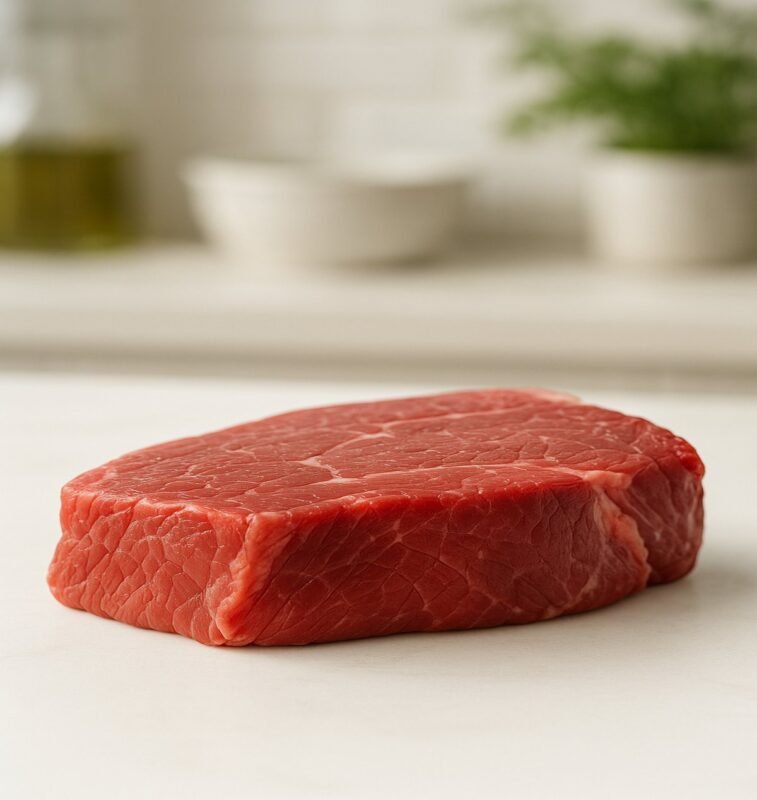How to Know If Beef Is Bad: A Simple Guide to Food Safety

Why It’s Important to Check Your Beef
It’s a common kitchen scenario: you pull a package of beef from the refrigerator, but something seems a bit off. Before you proceed with your meal, it’s essential to know for sure. Consuming spoiled meat can lead to foodborne illnesses, a risk no one should take.
Taking a moment to check your beef is a simple but critical step. When meat goes bad, it can harbor harmful bacteria, and relying on guesswork is never a safe bet. This guide will help you confidently determine if your beef is fresh and safe to eat.
The Smell Test: Your Most Reliable Indicator
Your sense of smell is the most effective tool for detecting spoiled beef. Fresh beef has a very subtle, almost neutral scent. You might notice a faint metallic smell, but it should never be unpleasant.
If you unwrap the beef and are hit with a powerful, off-putting odor, that is a clear warning sign. Beef that has gone bad will often have a sour, rancid, or ammonia-like smell. Trust your nose—if it smells wrong, it’s not safe to eat.
A Change in Color: What Does It Really Mean?
The color of beef can be an indicator of freshness, but it can also be misleading. It is normal for beef to turn a bit brown due to oxygen exposure. This does not automatically mean the meat has spoiled.
However, you should be concerned if you notice any green, grey, or blackish spots on the meat. These colors, especially when paired with a bad smell or a slimy texture, are strong indicators that the beef has spoiled and must be thrown away.
The Touch Test: Is the Beef Slimy or Sticky?
Fresh beef should feel firm and moist, but never slimy. When you handle it, it should not leave a sticky or tacky residue on your hands. The texture of beef changes distinctly as it begins to spoil.
A slimy film on the surface is a sure sign of bacterial growth. If the beef feels unusually sticky, it has likely spoiled. Do not try to rinse it off; the meat is no longer safe for consumption.
Don’t Just Rely on the Expiration Date
Expiration dates like “sell-by” or “use-by” are helpful guidelines, but they are not foolproof. Beef can spoil before its expiration date if it is not stored correctly. These dates are more about quality than absolute safety.
Your senses are more reliable than the date on the package. If the beef smells or feels bad, discard it, even if the date suggests it should still be good. Always prioritize a direct inspection of the meat itself.
The Dangers of Consuming Spoiled Beef
Eating spoiled beef can introduce dangerous bacteria into your system, such as Salmonella, E. coli, and Listeria. These pathogens are a common cause of food poisoning, which can lead to a range of unpleasant symptoms.
Symptoms often include nausea, vomiting, severe stomach cramps, and diarrhea. While many people recover in a few days, food poisoning can be especially hazardous for young children, the elderly, and anyone with a compromised immune system.
How to Store Beef Properly to Maximize Freshness
Proper storage is the best way to keep your beef fresh for as long as possible. As soon as you bring it home, refrigerate your beef at or below 40°F (4°C). Keep it in its sealed packaging on the bottom shelf of the fridge to prevent its juices from contaminating other foods.
If you don’t plan to cook the beef within a day or two, freezing is your best bet. Wrap it tightly in freezer-safe material to protect it from freezer burn. Frozen properly, beef can be stored safely for several months.
When in Doubt, Throw It Out
The most fundamental rule of food safety is also the simplest: when in doubt, throw it out. A single meal is never worth the potential risk of a nasty illness. If you have any suspicion that your beef may be bad, the safest and smartest decision is to discard it.
By learning to trust your senses and practicing good storage habits, you can confidently ensure that every beef dish you prepare is not only delicious but also completely safe.
Last modified:

